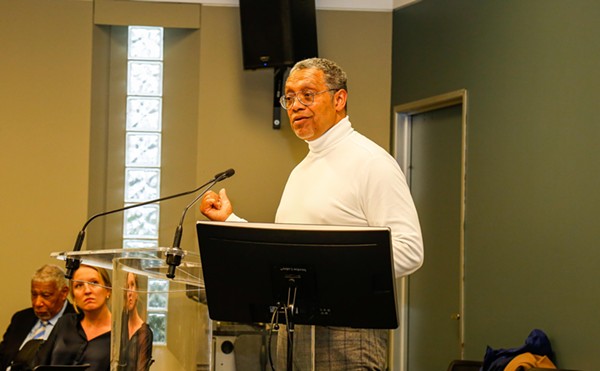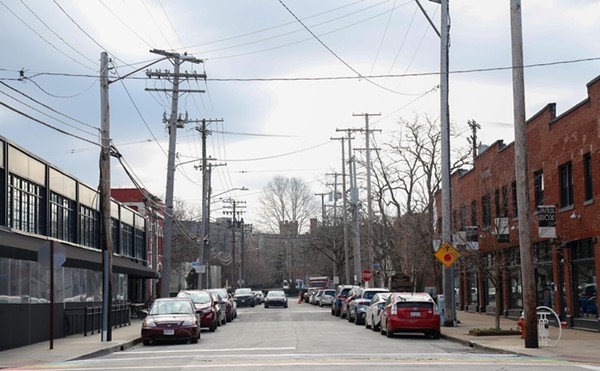A solar power project in Allen and Auglaize counties has been killed by state officials due to opposition from local governments, even though the application for the project was filed before a new Ohio law was put in place giving county governments the ability to nix such projects.
In an opinion and order issued last Thursday, the Ohio Power Siting Board (OPSB) denied an application from Birch Solar seeking to construct a 300 megawatt solar farm sited on 1,410 acres in Allen and Auglaize counties. The OPSB said their opinion supporting local government opposition to the project was independent of the new law.
Before construction can begin on any major utility facility or economically significant wind farm within the state of Ohio, a certificate of environmental compatibility and public need must be obtained from the OPSB, which has voting members of its board representing various state departments including development, natural resources, agriculture, environmental protection, and health; a public engineer appointed by the governor; and the chair of the Public Utilities Commission of Ohio (PUCO).
The OPSB board order acknowledged “numerous public benefits” from solar projects, but said that all four government entities with physical contacts to this project acted to oppose certification of it.
This includes the Allen County commissioners, the Auglaize County commissioners, Shawnee Township in Allen County, and Logan Township in Auglaize County. The OPSB also noted public comments filed against the project in the case, saying they came in at a ratio of approximately 80% opposed and 20% in support.
In October 2021, a new state law gave local governments veto power over renewable energy generation sites — a veto power that doesn’t exist for fossil fuel developments. The international scientific community has continued to issue grave warnings about the impacts of man-made climate change and the need to shift away from fossil fuels.
The OPSB said in a footnote to their order that this case was not impacted by the new law, which only applies to projects filed after Oct. 11, 2021. Birch Solar began the process for filing for approval from the OPSB in October 2020.
“Nevertheless, the (OPSB’s) obligation to determine a project’s compliance with the public interest, convenience, and necessity remains in effect as to Birch Solar’s application,” the OPSB determined. “Accordingly, the (OPSB) must consider, independent of (the new law), the manner and degree of opposition of local governments impacted by the project as it relates to whether the project is in the public interest, convenience, and necessity.”
In April of this year, both the Allen and Auglaize county commissioners passed resolutions banning large wind and solar projects in unincorporated areas of their counties. They are among nearly a dozen county boards of commission in Ohio to do so.
Allen County is home to Lima, Ohio, the hometown of both Ohio House Speaker Bob Cupp and Ohio Senate President Matt Huffman, who both voted for the law giving local governments the ability to axe wind and solar projects.
As OCJ has reported, the siting board’s staff this summer recommended against granting a permit to build a solar farm in Greene County capable of powering an estimated 34,000 homes per year. That proposed 175-megawatt project sits on 1,500 acres of rural land in townships of Miami, Xenia, and Cedarville, including about half a mile from Gov. Mike DeWine’s own backyard. DeWine has told reporters he has avoided taking a position on that project. The OPSB itself has not yet made a determination in that case.
In its decision last week, the OPSB noted the Allen and Auglaize county resolutions against renewable energy projects, stating that, “The primary concern surrounding the project results from the uniform public opposition expressed by the local government entities whose constituents are impacted by the project.”
Regarding the public opposition to the Birch Solar project in specific, submitted in comments, the OPSB said that while they are less reliable than admitted evidence, they are relevant to consideration of the matter.
“We note that the opposition public comments reinforce issues raised in both the local public hearing and the local government communications that oppose the project,” the OPSB wrote. “Hence, the public comments reinforce, rather than contradict, the conclusions of government bodies that were formally considered at the local level, as well as those who testified at the local public hearing.”
The OPSB’s opinion did acknowledge the “numerous public benefits” of “all proposed solar facilities,” including the public’s interest in energy generation; economic benefits relative to increased employment and tax revenue; air quality and climate impact improvements relative to transitioning from fossil fuels to renewable energy resources; protecting landowner rights; and preserving agricultural land use.
Regardless, the opposition from local governments outweighed these things. The OPSB wrote that they rejected the applicants’ conclusion that local governments have waned in their opposition in any way. They cited the fact that Allen County and Auglaize County have both issued resolutions this year reiterating their opposition, as has Shawnee Township, and that none of the entities delivered any notice that they had changed their opposition.
“Based on the unanimous and consistent opposition to the Project by the government entities whose constituents are impacted by the Project, the Board finds that the Project fails to serve the public interest, convenience, and necessity as required by (Ohio Revised Code),” the OPSB determined.
The website for the Birch Solar project estimates 400 local jobs would’ve been created by the project, bringing in $2.7 million in new annual revenue for schools as well as local and county governments, and investments of $4.6 million in annual operating expenses spent in the region.
Originally published by the Ohio Capital Journal. Republished here with permission.












